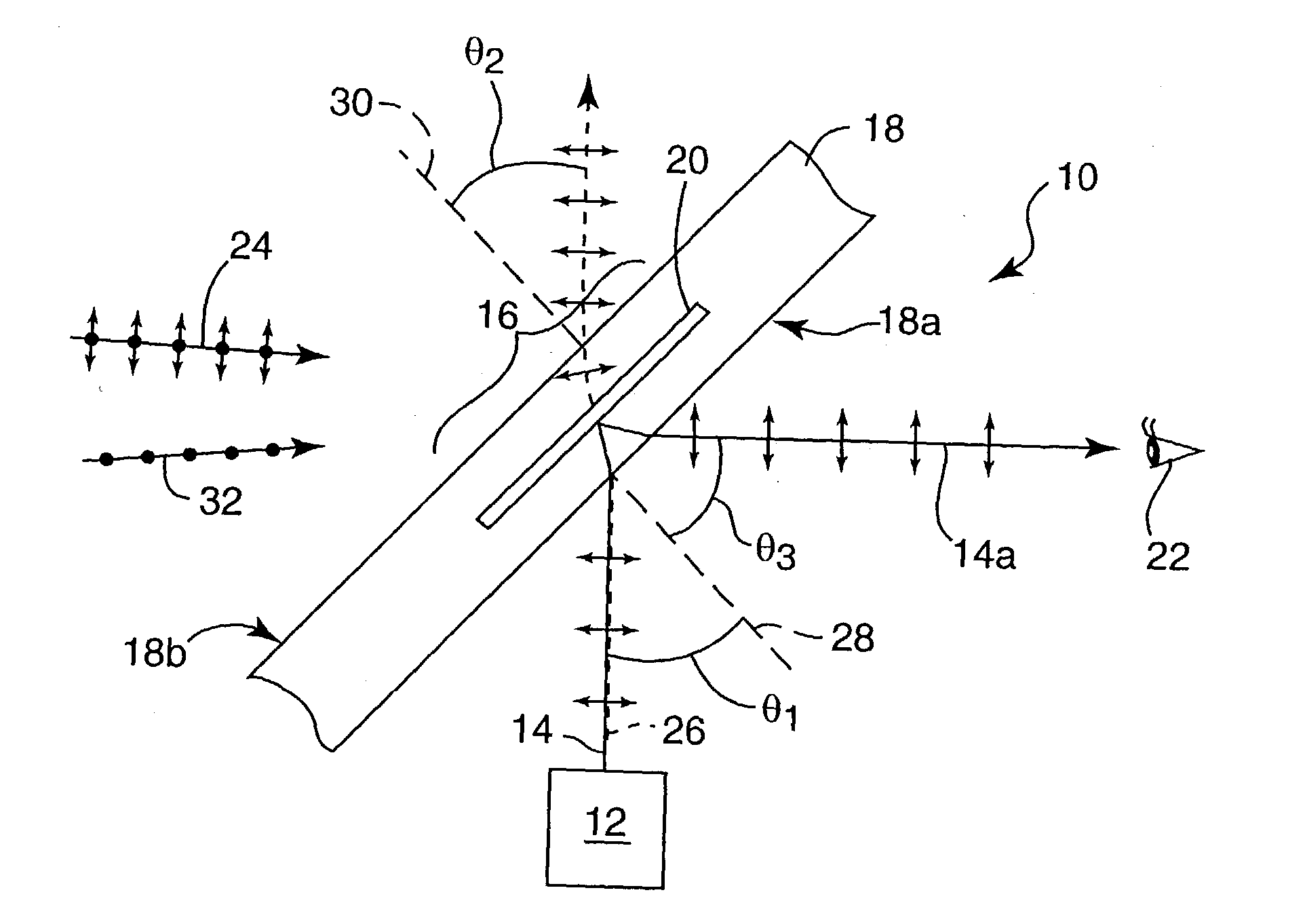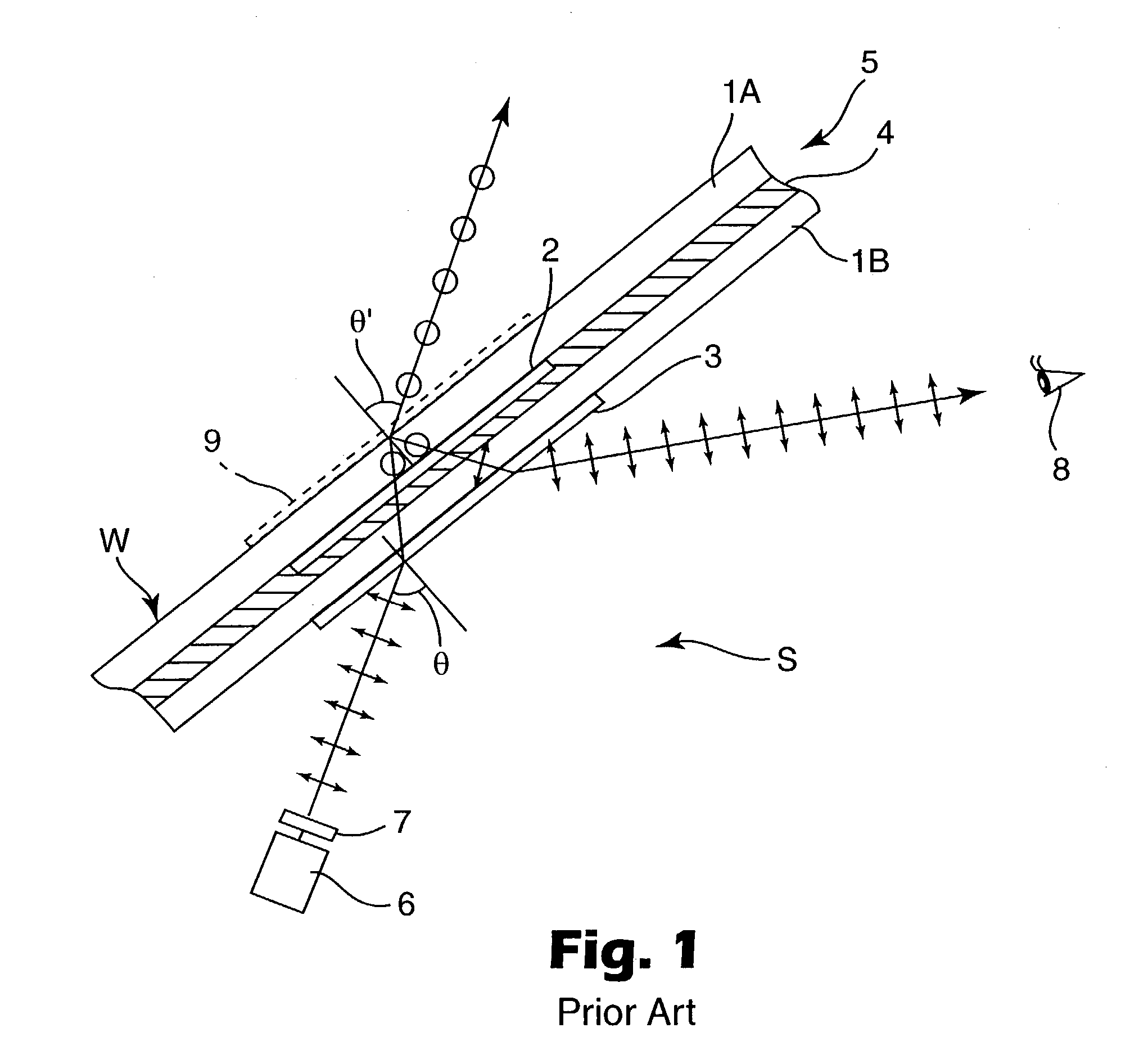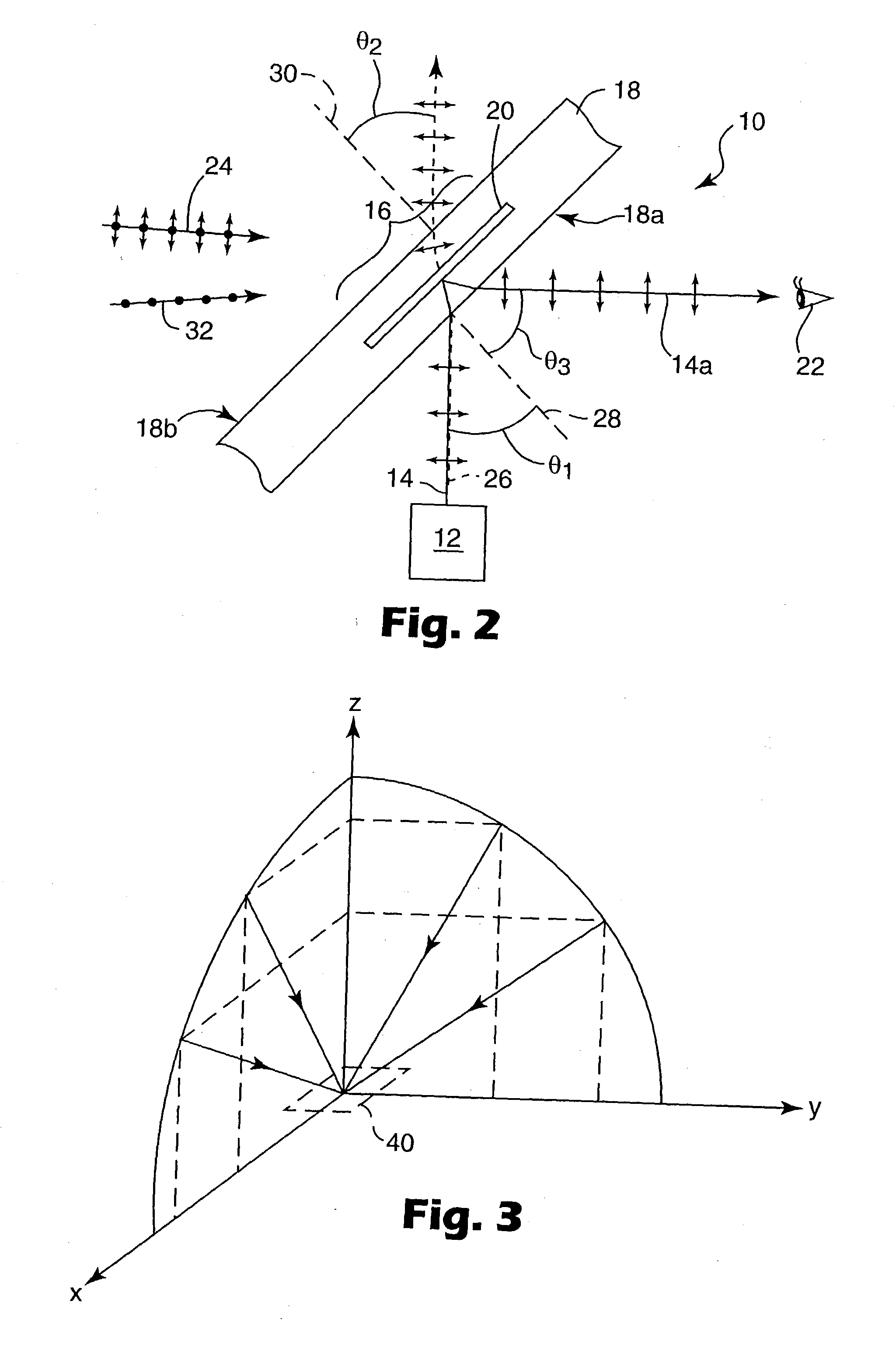Head-up display with polarized light source and wide-angle p-polarization reflective polarizer
a head-up display and light source technology, applied in the field of head-up displays, can solve the problems of obliqueness, multi-image, ghosting, etc., and achieve the effect of higher reflectivity
- Summary
- Abstract
- Description
- Claims
- Application Information
AI Technical Summary
Benefits of technology
Problems solved by technology
Method used
Image
Examples
Embodiment Construction
[0027] A partial schematic view of an illustrative HUD system 10 is shown in FIG. 2. In brief, a projection system 12 is provided to direct light 14 towards a target area 16 of a window 18. A reflective polarizer 20, disposed proximate the target area 16, then reflects at least some of the projected light towards the intended viewer 22.
[0028] Simultaneously, the reflective polarizer 20 and the window 18 transmit at least some light 24 from the outside environment to permit observation thereof by viewer 22.
[0029] Projection system 12 can be a conventional system that projects a visible light beam or image, and can include known elements such as an LCD, electroluminescent panel, incandescent or phosphorescent light source, CRT, LEDs, and lenses, collimators, reflectors, and / or polarizers. The emitted light can be substantially monochromatic, polychromatic, narrow band, or broad band, but preferably overlaps at least a portion of the (visible) spectrum from about 400 to 700 nm. Signifi...
PUM
| Property | Measurement | Unit |
|---|---|---|
| reflectivity | aaaaa | aaaaa |
| reflectivity | aaaaa | aaaaa |
| reflectivity | aaaaa | aaaaa |
Abstract
Description
Claims
Application Information
 Login to View More
Login to View More - R&D
- Intellectual Property
- Life Sciences
- Materials
- Tech Scout
- Unparalleled Data Quality
- Higher Quality Content
- 60% Fewer Hallucinations
Browse by: Latest US Patents, China's latest patents, Technical Efficacy Thesaurus, Application Domain, Technology Topic, Popular Technical Reports.
© 2025 PatSnap. All rights reserved.Legal|Privacy policy|Modern Slavery Act Transparency Statement|Sitemap|About US| Contact US: help@patsnap.com



